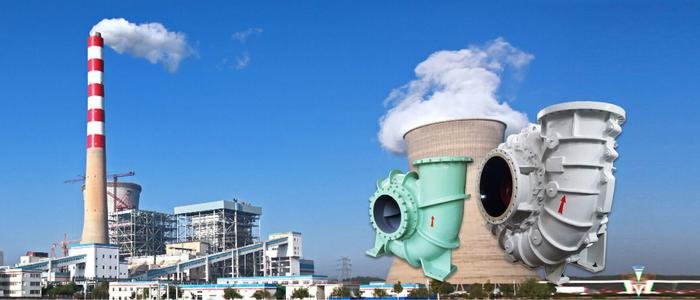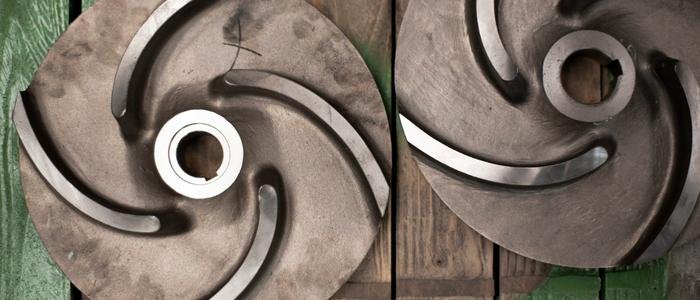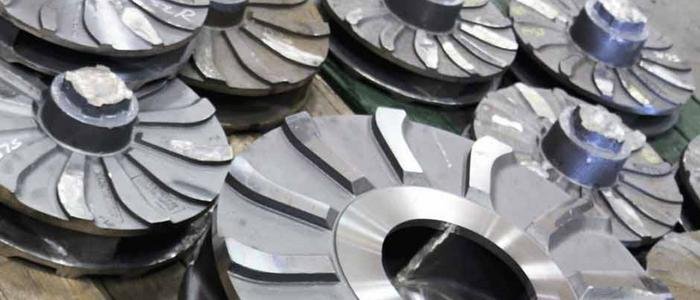The distinctive design of Kingda’s powerful slurry pumps was developed for grinding mill discharge applications and other abrasive slurries.

Given today’s increasing demand for consumer goods, construction materials, and infrastructure improvements, including critical materials required for expanding all types of power generation, metals such as iron, copper, aluminum, nickel, and others are the backbone of these products…but not always in their raw form. Steel, aluminum, copper, and nickel, among other elements, are transformed into useable goods through a complex manufacturing process that involves multiple raw materials.
Kingda offers wet-end conversions or entire pump assemblies to satisfy customer requirements and requests.
What is a Metal Slurry Pump?
The slurry business relies heavily on rugged metal pumps. Transporting abrasive, slurry materials from one place to another within the system would be difficult, if not impossible, without them.
Because it handles slurries that could clog or wear out other types of pumps, a rugged metal pump is also known as a slurry pump. It is built of a firm material appropriate to its transport combination.
The slurry’s solid particles can be abrasive. As a result, the linings are frequently comprised of metal or rubber that can survive the hits and scratches that the particles might cause.
Application of Metal Slurry Pump

Here are some industries that use this type of pump:
- Chemical Process
- Mining
- Sand and Gravel
- Pulp and Paper
- Textile
- Steel and Mill
- Oil and Gas
- Paint
- Power
- Wastewater Treatment
- Sugar
- Food and Beverage
- Plastics
- Pharmaceutical
This type of equipment is versatile and used in various sectors. There are three types of this type of pumps in these industries.
Horizontal
The most popular variety is dry-mounted. Pumps are horizontal. Cantilevered centrifugal slurry pumps developed for handling abrasive, high density
Vertical
Saves floor space whether mounted dry or semi-dry. Vertical slurry pumps are highly configurable pumps that save maintenance and operating expenses. They take up less floor area than horizontal pumps and have worn strong metal or rubber components. A.
Submersible
Because the entire package is in the slurry, it emits little noise. A submersible pump, often known as an electric pump, is a water-submersible pump. The motor is hermetically sealed and is close-coupled to the pump’s body. A submersible pump converts rotary energy into kinetic and pressure points.
Impellers with broad channels are used in the design to reduce wear while increasing throughput. Additionally, the bearings are isolated and carefully built to be heavy-duty and leak-free.
Features of Metal Slurry Pump
Specific designs can tolerate slurries with high temperatures and pH levels. Furthermore, because these solid-liquid mixes can bend and are difficult to pump, this equipment typically requires more power. As a result, it has a higher operating cost than a typical water pump.

The type of heavy metal pump you will employ in your process will be heavily influenced by the material you will be moving.
Bearing assembly
A big-diameter shaft with a short overhang reduces deflection and increases bearing life. The cartridge-type housing is held in place by only four.
Liners
Liners are bolted, not glued, to the shell for a strong connection and ease of maintenance. Hard metal liners and press pressure-molded towers are capable. All lAn elastomer seal surrounds all liner joints.
Casing
Casing halves made of cast or ductile iron with exterior reinforcing ribs allow for high operating pressures and an extra layer of safety.
Impeller
Pump out vanes on the front and rear shrouds to reduce recirculation and seal contamination. Impellers made of hard metal and molded elastomer. Impeller threads that are cast in do not require inserts or nuts. There are additional high-efficiency and high-head designs available.
Throatbush
The tapered fitting edges enable for positive, exact alignment during assembly and complete removal, which reduces wear and simplifies maintenance.
One-piece frame
The cart cartridge-typing and shaft assembly are held in place by an extra solid piece frame. Below the bearing housing is an external impeller adjustment mechanism for convenient impeller clearance adjustment.
However, with several options on the market, selecting a decision can be tough, and making the wrong choice can be costly. Please allow this article to help you understand the fundamentals of slurry pumps and choose the best one for your process.
Working Progress of Metal Slurry Pump

Many hard-rugged pumps are centrifugal. The entrance of the pump is placed in the center of a rotating impeller. As the mixture flows between the impeller blades and reaches the edges by centrifugal force, pressure energy accumulates between the impeller and the casing. This, in turn, produces kinetic energy, which is used to pump the mixture.
Because the mechanism is simple, this equipment is highly productive and easy to maintain.
Understanding this mechanism can also help you pick which parts and characteristics to pay particular attention to when dealing with this equipment.
The impeller must be robust, the casing must be simple to repair, and the motor and rotating shaft must function probe correctly
What Factors Should be Considered Before Purchasing Hard Metal Pump?
Characterize the material
You’ll need to consider various criteria while constructing your pumping system, not only the pump to use
Particle Size and Distribution
The shape of the particles, the faster the particle moves through the pipeline.
Particle Shape
Different shapes of particles will behave differently. The ideal shape body is perfectly spherical. However, this is only sometimes the case. Sharp-edged particles may prematurely harm the lining, making defining the shape one of the factors to consider.
Concentration
This should be expressed in terms of mass
Gravity Specification
Divide the density of the solid by the density of the liquid to calculate. This value is directly related to the p.
Settling or non-settling
Particles larger than 75 micrometers tend to sink, while particles remain suspended in the fluid. Specifications are affected by this knowledge. The homogeneity of the solid-liquid mixture is also affected by this.
Think about the flow
The slurry may be considered if the particles are tiny enough and tend to form a homogenous mixture.

Knowing this will determine how the slurry behaves when stressed. Is the shear rate proportional to the applied shear stress? Is a tremendous, more significant effort required before it begins to flow?
Determining the mixture’s homogeneity also aids in visualizing how the mixture behaves within the pipe system. The settling solid particles will touch the pipes and pump walls, while the non-settling solid particles will continue to flow.
The velocity at which the particles flow along the pipeline will also be necessary if the speed is too high, and the pipe will wear down more quickly. There will also be higher friction losses.
Meanwhile, if the velocity is too slow, the particles may settle, resulting in sedimentation and friction losses.
With all of this in mind, select a robust metal pump with a broad operating range that is finally intended for your system.
Could you set up the discharge requirements?
The static discharge head plus the friction losses equal the total discharge head. Take note of any target pressures you may have. Essentially, you must know the height at which you wish to discharge the mixture, and the power required is adeptness.
Reasons to Consider Metal Slurry Pump
Slurries are tough to pump because of their heavy viscosity and irregular texture. When corrosive fluids and abrasive materials are added to the mix, keeping a slurry pump running at any time becomes extremely difficult. Other parts wear out or dissolve quickly, necessitating costly pump repairs and replacements every few months to years. Titanium has long held the possibility for improved corrosion resistance, but machining constraints have precluded the metal from being employed in slurry pumps.
Stainless Steel and Corrosion Resistance
Stainless steel is the most frequent metal used in slurry pumps. Compared to aluminum or iron, this material offers decent corrosion resistance from industrial-strength impellers to outer casings. However, stainless steel could be a better material, particularly for slurry pumps subjected to significant daily use. The steel is hard and brittle at greater hardness levels, which can lead it to break in response to forces such as cavitation. Despite adding chromium and other elements such as nickel and magnesium, stainless steel only resists corrosion to varying degrees depending on the alloy.
Improved Corrosion Resistance of Metal
Chromium has stronger corrosion resistance to acidic substances at both ends of the pH scale and chloride-rich chemical combinations. Stainless steel is only corrosion-resistant on the surface due to an oxidation layer that builds across the metal when exposed to oxygen. Rust can occur quickly when that protective coating is damaged or marred, a common form of wear in highly abrasive slurry processing systems. Titanium and its alloys maintain corrosion resistance throughout the material, not just on the top, avoiding the corrosion process from the start, even when technical wear and response to a situation.
Summary
Investing in equipment that will make your process more efficient, error-free, and productive will undoubtedly lead to increased business profitability. Although numerous factors influence your business costs, your equipment is undoubtedly significant.
With such a large selection of rugged metal pumps on the market today, it is easy to become overwhelmed. However, equipped with fundamental knowledge, you will find something suitable for your procedure.


